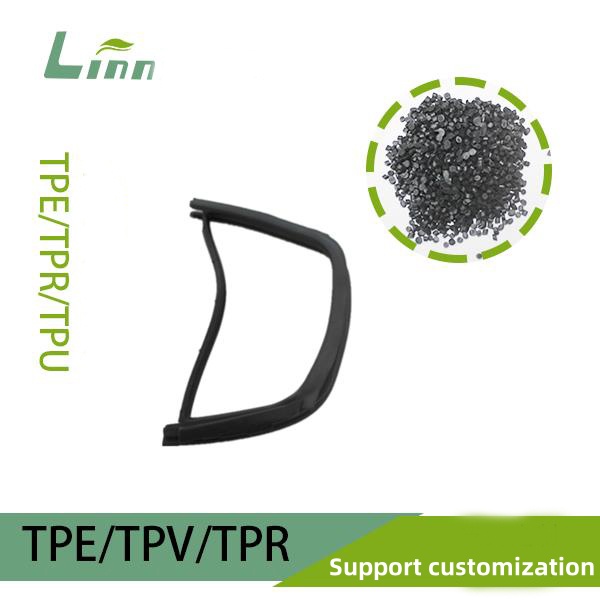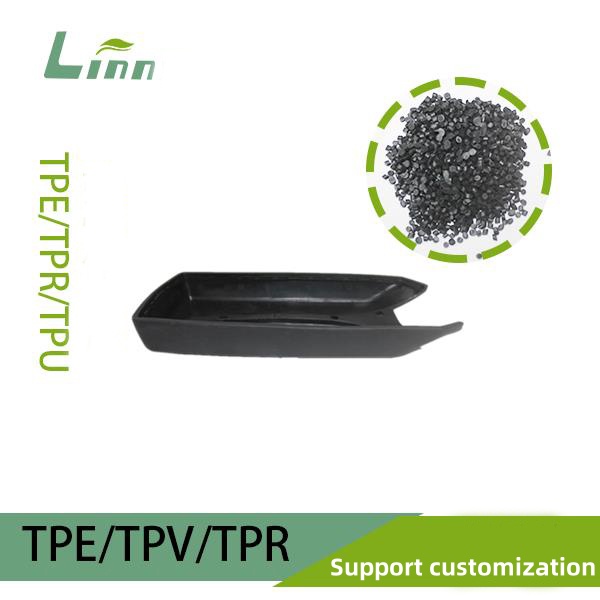As someone who’s spent years working with TPE (Thermoplastic Elastomer) materials, I know why TPE soft plastic is a go-to choice for products like phone cases, seals, toys, and medical devices. Its softness, durability, and eco-friendliness are tough to beat. But one issue that often crops up in production or use is insufficient stickiness. Whether you need TPE to bond better with a substrate or want a tackier surface for your product, this problem can affect performance and user experience. Drawing from my hands-on experience, I’m here to dive into how to boost TPE’s stickiness, covering everything from material selection to process tweaks and practical tips to help you find the best solution.

Why Is TPE Soft Plastic Not Sticky Enough?
To enhance TPE’s stickiness, we first need to understand why it might lack tack in the first place. Over the years, I’ve worked with countless TPE products and identified several common culprits behind poor stickiness:
Limitations in Material Formulation
TPE’s stickiness depends heavily on its formula, particularly the soft segment (like SEBS or SBS) and tackifying additives. If the soft segment is too low or tackifiers are absent, the surface can feel too smooth and lack grip.
Poor Compatibility with Substrates
In overmolding or co-extrusion, TPE often needs to bond with materials like PP, ABS, or PC. If the substrate has low surface polarity or isn’t pre-treated, TPE struggles to stick firmly.
Improper Processing Techniques
Incorrect processing parameters—such as temperature, pressure, or cooling rates—can hinder stickiness. For example, overly high temperatures may degrade tackifying components, while low temperatures can limit material flow.
Inadequate Surface Preparation
A TPE surface that’s too glossy or contaminated with oils can reduce stickiness. This is especially critical when bonding TPE to other materials with adhesives.
Environmental Factors
Cold or humid conditions can alter TPE’s surface properties, reducing tack. Long-term exposure to air may also cause surface oxidation, weakening bonding performance.
With these causes in mind, we can explore targeted ways to boost TPE’s stickiness.
How to Improve the Stickiness of TPE Soft Plastic?
Through years of troubleshooting and swapping notes with industry peers, I’ve developed a range of effective methods to enhance TPE stickiness. Below are my top approaches, covering materials, processes, and post-treatments to suit different needs.

1. Optimize the TPE Formulation
Tweaking the formula is the foundation for improving TPE stickiness. When I helped a client develop TPE grips for overmolding, adjusting the tackifying components nearly doubled the bonding strength.
Steps:
Work with your TPE supplier to select a grade designed for bonding needs (e.g., high-SEBS-content or overmolding-specific materials).
Add tackifiers like rosin or petroleum resins, typically at 5-15% of the formula, adjusting based on your application.
Balance soft and hard segments to avoid compromising strength with excessive softness.
Test the formula’s stickiness and refine it through iterations if needed.
Tips:
Too much tackifier can affect transparency or weather resistance, so proceed carefully.
Choose eco-friendly tackifiers to meet standards like RoHS.

2. Pre-Treat the Substrate Surface
Boosting substrate surface energy is key to better TPE adhesion. When producing TPE-overmolded PP parts, I found that surface treatments improved bonding strength significantly.
Steps:
Clean the substrate with neutral detergent or isopropyl alcohol to remove oils and dust.
For low-polarity substrates like PP or PE, use corona treatment or plasma treatment to raise surface energy (aim for 38-42 dynes/cm).
For ABS or PC, lightly sand with 800-1000 grit sandpaper to enhance mechanical grip.
Apply a compatible primer if needed to strengthen chemical bonding between TPE and substrate.
Tips:
Mold immediately after treatment to avoid surface recontamination.
Regularly calibrate treatment equipment for consistent results.
3. Optimize Processing Parameters
Fine-tuning injection or extrusion settings can directly enhance TPE’s stickiness. While working on a TPE hose production line, I boosted surface tack by adjusting temperature and pressure.
Steps:
Increase processing temperature (by about 10-20°C above standard, but below the material’s degradation point) to improve flow and substrate bonding.
Raise injection pressure (by 10-15% over baseline) to ensure TPE fills the mold and contacts the substrate tightly.
Extend holding time (by 20-30%) to allow TPE molecules more time to bond with the substrate.
Slow cooling rates slightly to prevent stress that could weaken adhesion.
Tips:
Log the results of each adjustment to dial in the perfect settings.
Avoid excessive temperatures that could degrade material properties.

4. Surface Modification
For products needing a tackier surface, surface modification is a practical solution. When I worked on TPE yoga mats, this approach made the surface noticeably grippier, improving user satisfaction.
Steps:
Use ultraviolet (UV) irradiation or low-temperature plasma treatment to increase surface polarity and tack.
Apply a thin layer of tack-enhancing coating (like silicone- or rubber-based agents) evenly across the surface.
Test the cured surface for natural, lasting stickiness.
Tips:
Choose coatings compatible with TPE to preserve transparency or softness.
Periodically check coating durability and reapply as needed.
5. Use Adhesives as Support
When TPE struggles to bond with a substrate, specialized adhesives can save the day. I used adhesives to solve bonding issues with TPE-overmolded metal parts, ensuring a secure connection.
Steps:
Select an adhesive suited for TPE, such as cyanoacrylate or hot-melt glue, ensuring compatibility with the substrate.
Clean both the TPE and substrate surfaces, then apply a thin adhesive layer.
Follow curing instructions (typically 10 seconds to 24 hours, depending on the adhesive).
Test bond strength to confirm it meets requirements.
Tips:
Use non-toxic, eco-friendly adhesives, especially for medical or food-contact applications.
Adhesives add cost, so reserve them for high-demand scenarios.

6. Switch to High-Tack TPE Materials
If other methods fall short, the material itself may not be up to the task. Switching to a high-tack TPE grade can resolve the issue permanently. Linn’s TPE materials, for example, are formulated for excellent bonding and undergo rigorous testing to ensure top-notch stickiness.
How to Prevent Low Stickiness in TPE?
Prevention is always smarter than fixing problems after they arise. Here are some lessons I’ve learned to keep TPE stickiness issues at bay.
Select the Right TPE Grade
Choose a high-tack TPE tailored to your application, like Linn’s overmolding-specific materials, optimized for bonding with PP, ABS, and more while meeting standards like REACH.
Test Bonding Early
Before full production, run small-scale trials to check TPE-substrate adhesion. Use peel strength tests (referencing standards like ASTM D903) to measure performance.
Control the Production Environment
Keep workshop humidity below 50% to avoid moisture affecting material properties. Regularly clean equipment to prevent oil contamination that could reduce tack.
Standardize Procedures
Train operators on TPE’s unique processing needs to avoid errors that compromise stickiness.
Maintain Products
For long-term use, clean TPE products periodically with neutral detergent to preserve surface tack. Apply tackifiers as needed to extend performance.

Comparison Table: Methods to Boost TPE Stickiness
To help you pick the best approach, here’s a clear comparison table:
| Method | Best For | Pros | Cons | Time Required | Cost |
|---|---|---|---|---|---|
| Optimize Formulation | Low material stickiness | Long-lasting, root-level fix | Needs expertise, long development | Days to weeks | High |
| Pre-Treat Substrate | TPE-substrate bonding | Simple, widely applicable | Requires extra equipment/steps | Minutes to 1 hour | Medium |
| Optimize Processing | Process-related tack issues | Fast, low-cost | Needs trial and error | Hours | Low |
| Surface Modification | Low surface tack | Enhances grip, visible results | Requires specialized tools | Hours | High |
| Use Adhesives | High bonding demands | Reliable for tough substrates | Adds steps, higher cost | Minutes to 1 day | Medium |
| Switch to High-Tack TPE | Poor material performance | Permanent solution | Requires new sourcing | Immediate | High |
Common Questions About TPE Soft Plastic Stickiness
To wrap up, here are answers to some questions I often hear:
Q1: Does low TPE stickiness affect product quality?
A: Yes, it can lead to issues like overmold peeling, seal failures, or poor user experience, especially in demanding fields like medical or electronics. Linn’s TPE is optimized for reliable adhesion.
Q2: Why does TPE stickiness fade over time?
A: Surface oxidation, oil buildup, or environmental exposure can reduce tack. Regular cleaning and proper storage can maintain performance.
Q3: Can regular glue improve TPE stickiness?
A: Not really. Standard glues often don’t bond well with TPE and can damage the material. Specialized adhesives are a better choice.
Q4: Does boosting TPE stickiness affect other properties?
A: It can—too many tackifiers might reduce transparency or hardness. Linn’s formulations strike a balance for versatility across applications.
Q5: How do I know if a TPE is good for bonding?
A: Check the technical data sheet for substrate compatibility and adhesion details. Brands like Linn, backed by thorough testing, minimize risks.

Final Thoughts
Low stickiness in TPE soft plastic can be a hassle, but it’s entirely fixable with the right approach. Whether you’re reformulating materials, tweaking processes, or adding surface treatments, there’s a solution for every scenario. As someone who’s spent years in this industry, I believe a great product should stick around—literally and figuratively. At Linn, we’re committed to delivering TPE that bonds securely and performs flawlessly.
If you’re grappling with TPE stickiness issues, give these methods a shot—I’m confident they’ll help. Got more questions or a specific challenge? Reach out, and I’ll do my best to guide you!




